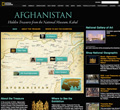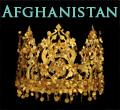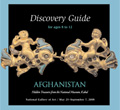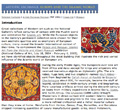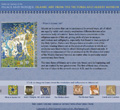
This exhibition is no longer on view at the National Gallery. Please follow the links below for related online resources or visit our current exhibitions schedule.
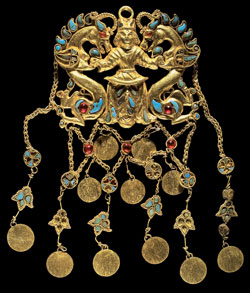 Some 228 extraordinary artifacts unearthed in modern Afghanistan—most on view for the first time in the United States—attest to the region's importance as a vital and ancient crossroads of trade routes known as the Silk Road, which stretched from Asia to the Mediterranean. Many of the objects were long thought to have been stolen or destroyed during some 25 years of conflict until they were dramatically recovered from a vault under the Presidential Palace in 2004. Dating back 2,000 years and more, the works belong to the National Museum of Afghanistan, Kabul, whose motto is "A nation stays alive when its culture stays alive." The exhibition, which begins its U.S. tour at the National Gallery of Art in Washington, DC, explores the cultural significance of the treasures and illustrates the story of their discovery, excavation, and heroic rescue.
Some 228 extraordinary artifacts unearthed in modern Afghanistan—most on view for the first time in the United States—attest to the region's importance as a vital and ancient crossroads of trade routes known as the Silk Road, which stretched from Asia to the Mediterranean. Many of the objects were long thought to have been stolen or destroyed during some 25 years of conflict until they were dramatically recovered from a vault under the Presidential Palace in 2004. Dating back 2,000 years and more, the works belong to the National Museum of Afghanistan, Kabul, whose motto is "A nation stays alive when its culture stays alive." The exhibition, which begins its U.S. tour at the National Gallery of Art in Washington, DC, explores the cultural significance of the treasures and illustrates the story of their discovery, excavation, and heroic rescue.
Ranging in date from 2200 BC to AD 200, the objects present a rich mosaic of Afghanistan's cultural heritage and are drawn from four archaeological sites. The works include gold bowls with artistic links to Mesopotamia from Tepe Fullol in northern Afghanistan; bronze and stone sculptures from the site of the former Greek city of Aï Khanum; bronzes, ivories, and painted glassware imported from Roman and Indian markets discovered in Begram; and more than 100 gold ornaments from among the 20,000 pieces known as the "Bactrian Hoard," found in 1978 in Tillya Tepe, the site of six nomad graves.
Maps will illustrate the locations of some 1500 archaeological sites, ancient cities, the routes known as the Silk Road, and regions that relate to the artifacts. A documentary film narrated by celebrated Afghan-American author, Khaled Hosseini, explores ancient Afghan culture, the history of these collections and their dramatic rediscovery. Short films throughout the show will include recreations of Aï Khanum and one of the intricately carved chairs—thought to be thrones—found there.
Afghanistan film
Afghanistan: Hidden Treasures
Narrated by Khaled Hosseini, author of The Kite Runner and A Thousand Splendid Suns, the twenty-eight-minute documentary features footage of the 2004 recovery of collections from the National Museum, Kabul, that had been hidden in the vaults of the Central Bank in the presidential palace. The film also includes interviews with National Geographic archaeologist and exhibition curator Fredrik Hiebert and director of the museum in Kabul, Omara Massoudi. It was produced by the National Geographic Society. It will be aired on WETA-TV in Washington and on public broadcasting stations throughout the United States. A twelve-minute version will be shown in the exhibition.
Organization: Organized by the National Geographic Society and the National Gallery of Art, Washington, in association with the Asian Art Museum, San Francisco; the Museum of Fine Arts, Houston; and The Metropolitan Museum of Art, New York.
Sponsor: It is supported by a grant from the National Endowment for the Humanities and an indemnity from the Federal Council on the Arts and the Humanities.
At the National Gallery of Art the exhibition is made possible by the E. Rhodes and Leona B. Carpenter Foundation. It is also supported by The Charles Engelhard Foundation.
Corporate support is provided by National Construction & Logistics and Hamed Wardak.
The works in the exhibition are the sole property of the Islamic Republic of Afghanistan.
Schedule: National Gallery of Art, May 25–September 7, 2008; Asian Art Museum, San Francisco, October 24, 2008–January 25, 2009; Museum of Fine Arts, Houston, February 22–May 17, 2009; The Metropolitan Museum of Art, New York, June 23–September 20, 2009




